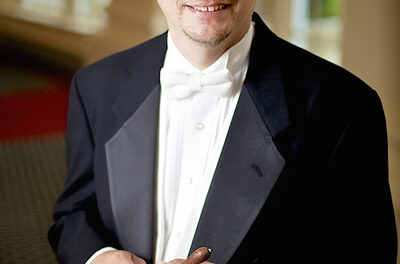All-female chamber groups are not so rare any more. The Raleigh Chamber Music Guild has presented several in past seasons, most recently the Eroica and the Ahn trios. But unlike those, made up of talented young newcomers packaged and accessorized for media consumption (record covers, posters, music videos), the three women of Triple Helix simply get down to the business of making good music, without fanfare or gimmicks.
It is not a backhanded compliment to say that pianist Lois Shapiro, violinist Bayla Keyes and cellist Rhonda Rider were less concerned with surface matters and more focused on finding the heart of the each work. They modestly took their places wearing comfortable garb (each different with no particular attempt at coordination), playing each piece with a minimum of overt gesture, and giving each an intelligent, committed performance. Certainly their academic careers (all are on Boston-area music faculties) informed their no-nonsense approach, but they also had a warmth and joy that was revealed more and more as the afternoon went on.
The opening piece was Mozart’s Trio in C Major, K.548, one of that composer’s most beautifully balanced chamber works. The first movement had a crisp verve, the players nevertheless mindful of all the little surprises and changes so characteristic of Mozart. Rider quickly established a nicely rounded cello tone, full of subtle character. Keyes had some minor trouble sustaining her violin tone and did not always take the lead strongly when the melody came her way. The second movement, with its gorgeous, stately lines, was given full emotional sway. The final allegro movement had good thrust, the sprightly, darting piano lines clearly and cleanly articulated by Shapiro (aided immensely by the Bösendorfer Imperial Grand on loan from Ruggero Piano). It was amusing to watch the subtle eye contact among the three as they as played along with Mozart’s mischief. Keyes’ tone was not always as sweet as necessary and suffered some minor intonation problems, but overall the piece was brought to a satisfying conclusion.
Alexander Zemlinsky’s 1985 Trio in D, Op. 3, a strong contrast to the Mozart, has music rich and syrupy, often angst-ridden and tortured but always providing brighter moments of hope. The players threw themselves into the music, easily riding the continually changing surges of rhythms and tempo. The first movement had a particularly engaging dialog between piano and cello and Keyes found the right hushed quality in the quieter violin passages. In the second movement, Rider, without trying to, became the star player with her wonderful, muted pizzicatos, delicate arpeggios and beautiful blending in the violin/cello duo passages. The dark, skittering lines of the third movement, alternating between contemplation and abandon, were fully realized. Here Shapiro and Rider took stage when in the musical spotlight, a boldness Keyes never quite seemed to take up, giving the work some imbalance where the violin’s tone should draw one’s attention. Still, this was the highlight of the concert, both from its performance and its relative unfamiliarity.
After intermission, the audience was treated to an old friend, Schubert’s Trio No. 1 in B-flat Major, Op. 99. Luckily, its quality is such that repeated hearings do not diminish its luster. Throughout the four movements Shapiro’s playing sparkled in its precision and clarity, providing a firm foundation for the other two instruments. Here Keyes and Rider had many moments of subtle blending, Keyes gratifyingly providing the necessary firmness and sweetness of tone. All the movements had fervor and good forward motion, with only the slow melody of the second movement in want of a bit more emotion.
The audience’s appropriately strong response at the work’s end brought the trio back for a short encore, a portion of the first movement of Paul Schoenfeld’s “Café Music.” The jazzy riffs and sassy syncopation added a lighter touch, sending the audience home with smiles and tapping toes.











